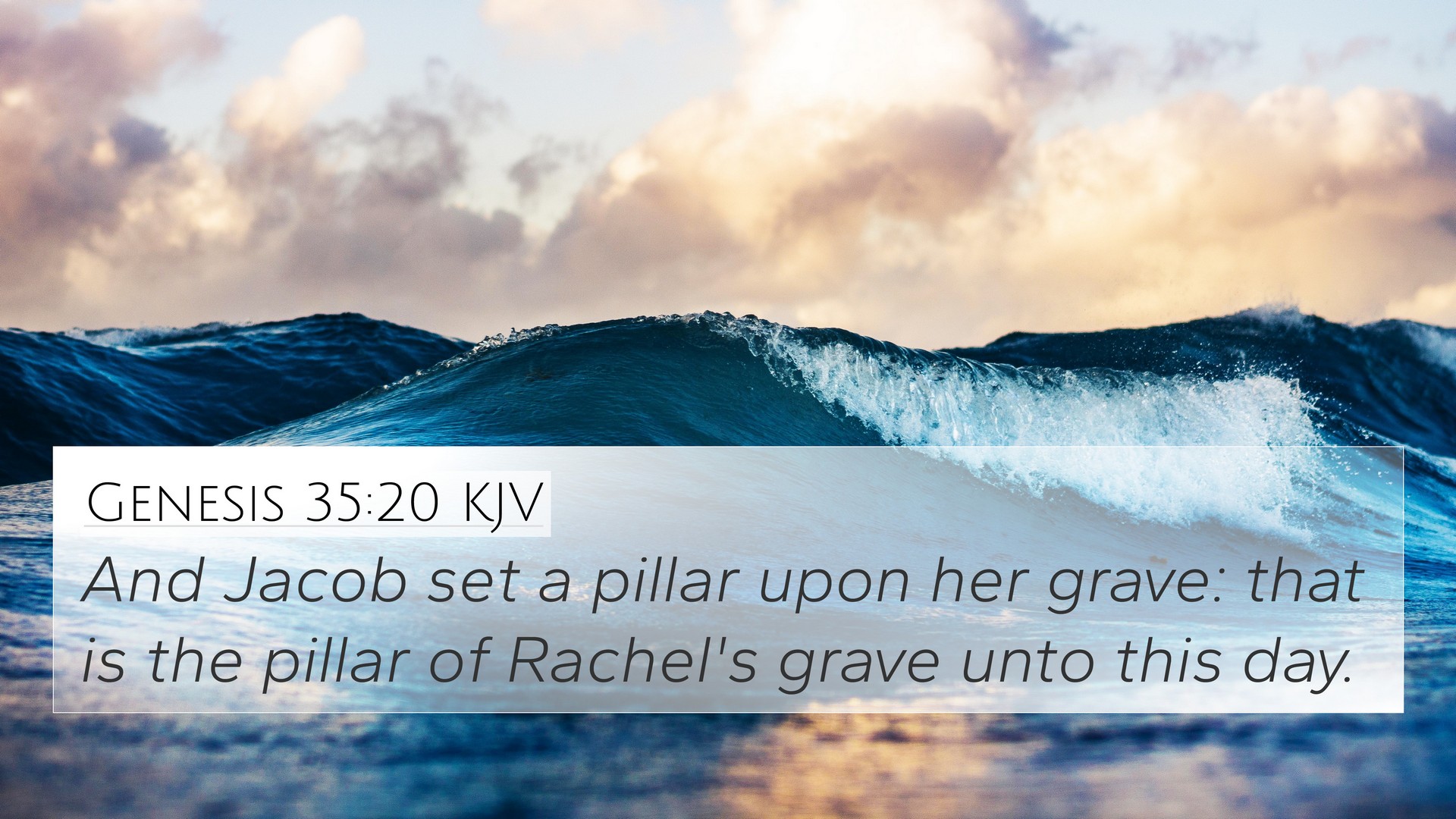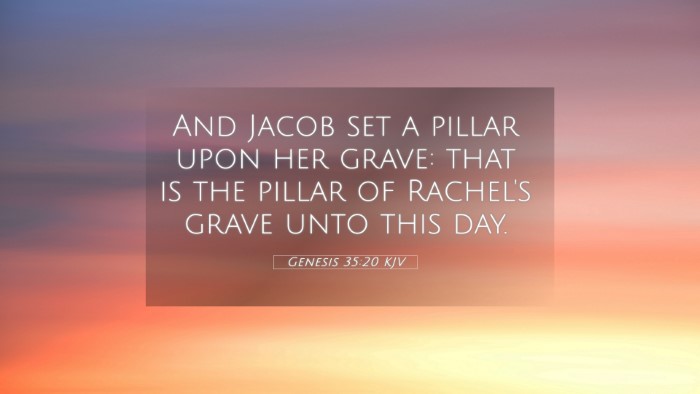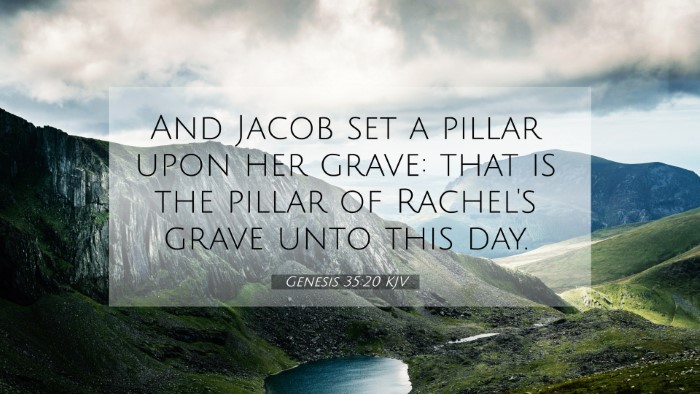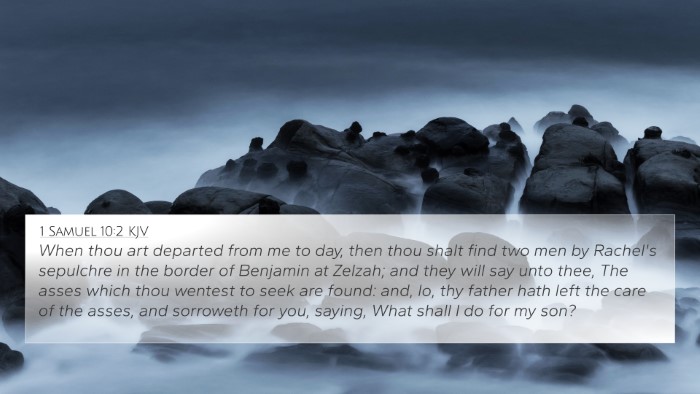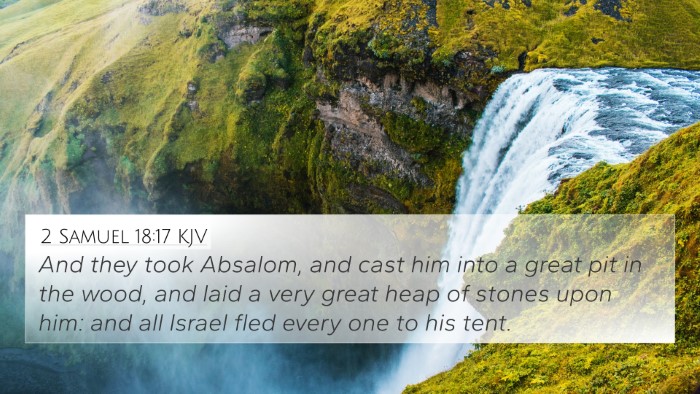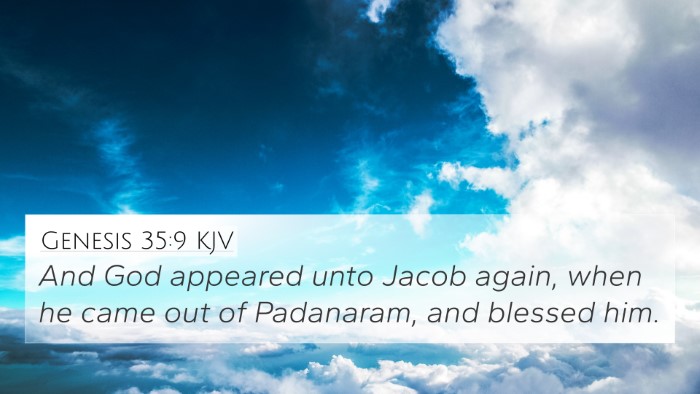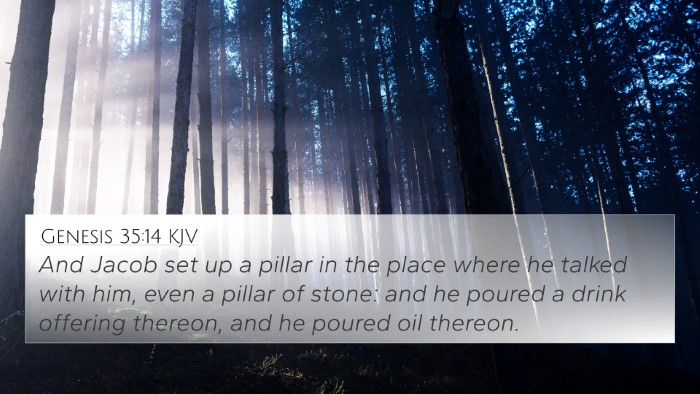Understanding Genesis 35:20
Genesis 35:20 states: “And Jacob set a pillar upon her grave: that is the pillar of Rachel's grave unto this day.” This verse encapsulates a poignant moment in Jacob's life and brings forth multiple themes significant to biblical understanding.
Summary of Insights
In this verse, Jacob's act of erecting a pillar marks a physical and emotional tribute to Rachel, his beloved wife who passed away during childbirth. The burial site serves not only as a grave marker but also as a testament to Jacob’s love and grief. This illustrates the deep personal connections within the biblical narrative and highlights the importance of remembering and honoring loved ones.
Commentary Insights
Various public domain commentaries provide a deeper exploration of this verse:
- Matthew Henry: He emphasizes the significance of mourning and remembrance in relationships, noting that Jacob's actions reflect a profound sense of loss. Henry suggests that the pillar serves as a lasting testament and a significant landmark for future generations.
- Albert Barnes: Barnes elaborates on the historical and cultural context of gravestones in the ancient near east. He notes that erecting such a pillar was customary to ensure the memory of the deceased persisted among their descendants.
- Adam Clarke: Clarke emphasizes the theological implications of death and legacy in the life of Jacob, suggesting that Rachel's death has a broader significance in the unfolding of Israel's history.
Cross-References
Genesis 35:20 can be linked to several Bible verses that enrich our understanding:
- Genesis 31:19: This verse discusses Rachel's theft of her father's idols, setting the emotional background for her story.
- Genesis 49:29-31: Jacob's final instructions about burial illustrate the importance of family heritage and remembrance.
- 1 Samuel 10:2: Reference to grave sites brings continuity to the theme of mourning and remembering loved ones.
- Matthew 2:18: This New Testament reference ties Rachel’s weeping to the broader narrative of grief and loss.
- Isaiah 66:10: The joy in Jerusalem is contrasted with Rachel's lament, reflecting on the theme of mourning transformed into joy.
- John 11:35: The verse “Jesus wept” connects with the theme of grief throughout scripture, portraying the humanity of emotional pain.
- Revelation 21:4: This verse offers hope, stating that God will wipe away every tear, relevant to the themes of mourning and loss portrayed in Genesis.
Thematic Connections
The act of constructing a grave marker serves as a powerful motif throughout the Bible:
- It highlights the importance of remembrance – as seen in other biblical graves like those of Abraham and Sarah.
- It connects to the theme of family legacy, as Jacob's actions serve as a precedent for future generations in Israel.
- It fosters a context of mourning and healing, as biblical figures regularly confront the pain of loss.
Practical Applications
Understanding Genesis 35:20 encourages us to:
- Honor our loved ones through commemorative acts, reflecting biblical customs.
- Utilize cross-referencing tools to explore themes of grief and remembrance throughout the Bible.
- Engage in Bible study methods that emphasize connections between passages, enhancing our understanding and applications.
Conclusion
Genesis 35:20 not only memorializes Rachel but also provides a window into the heart of Jacob, illustrating profound themes of love, loss, and the importance of honoring our memories. Through a comparative Bible verse analysis, we see how diverse biblical narratives interlink, offering insights into our faith and the human experience.
